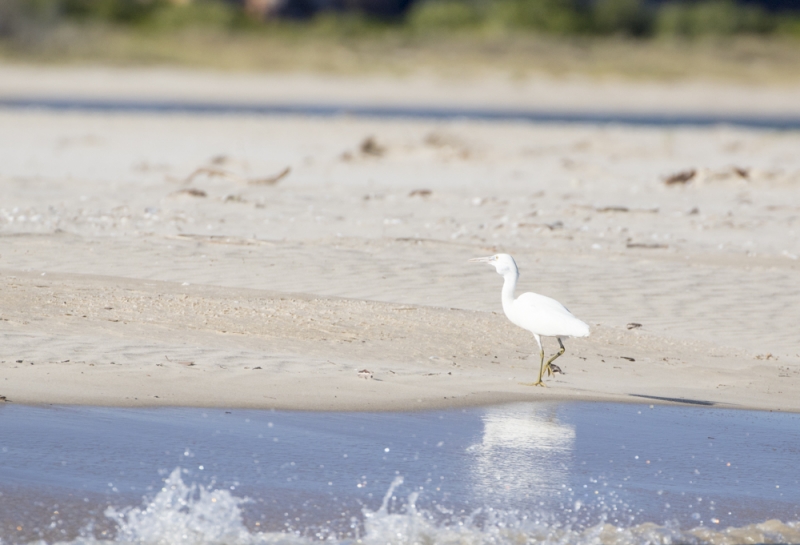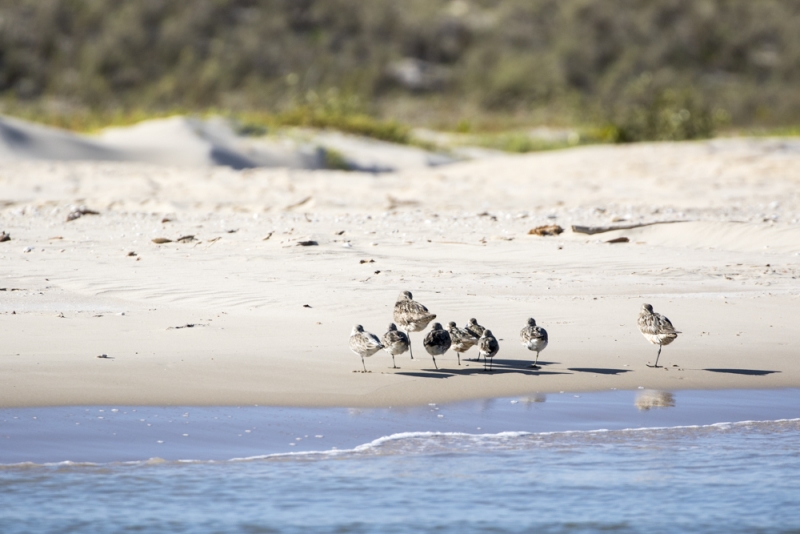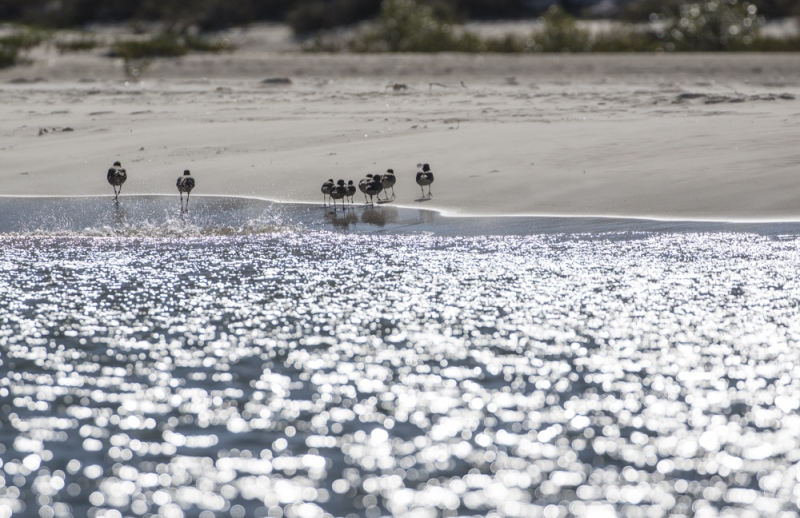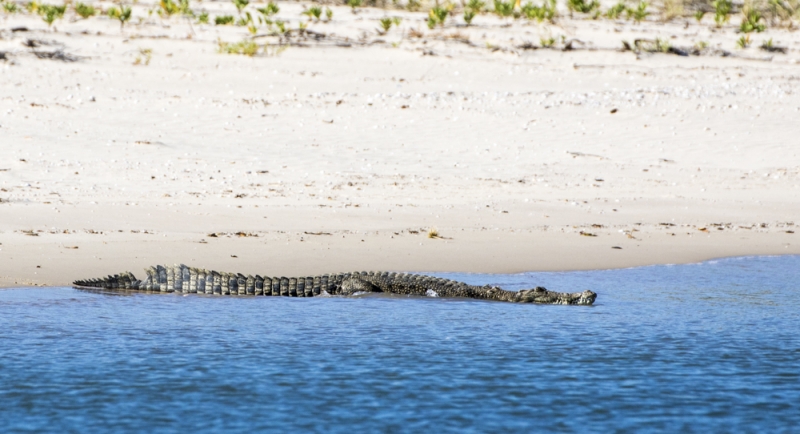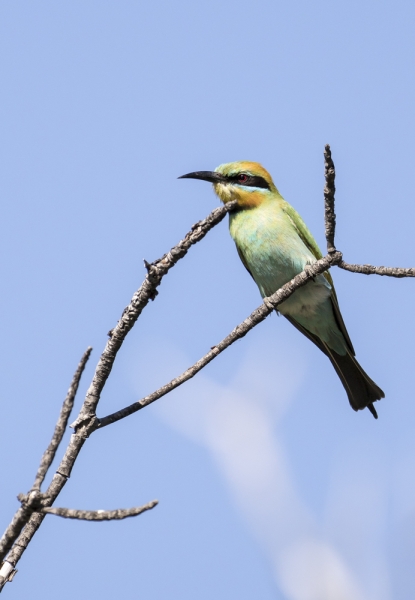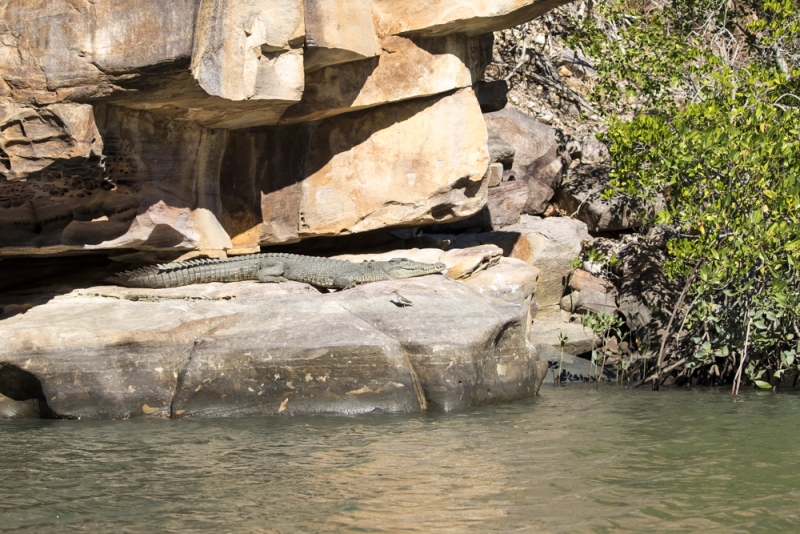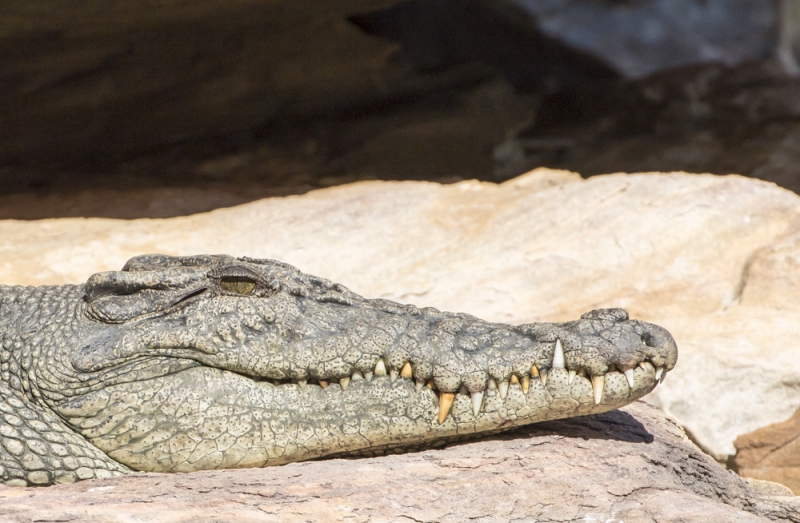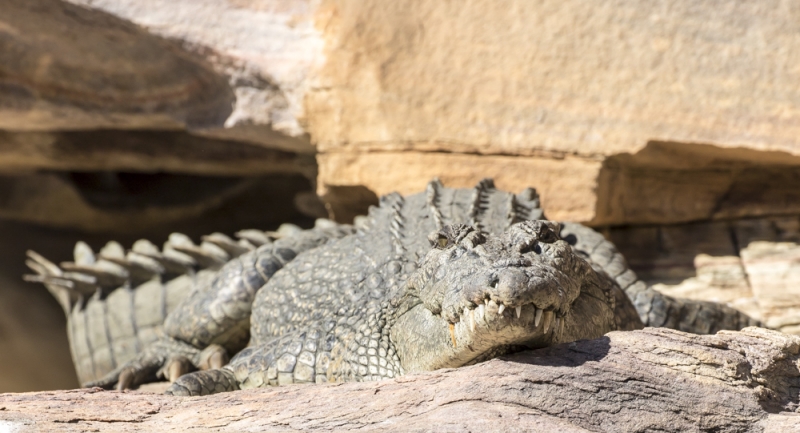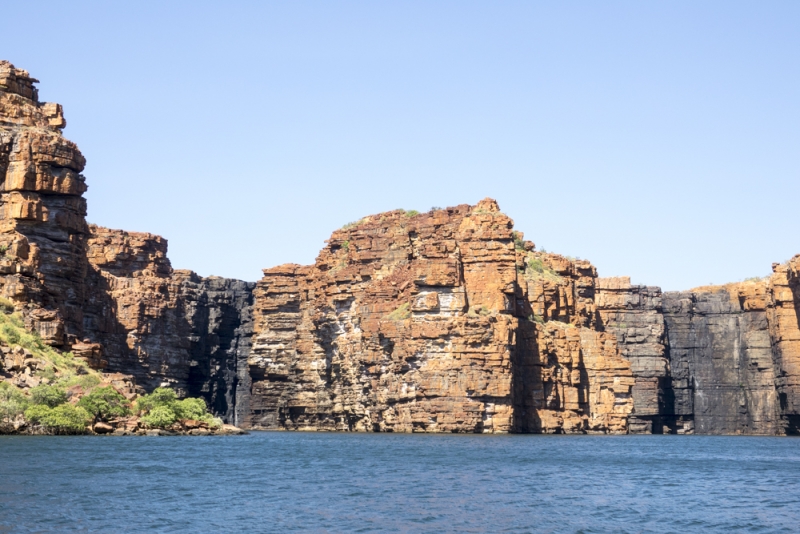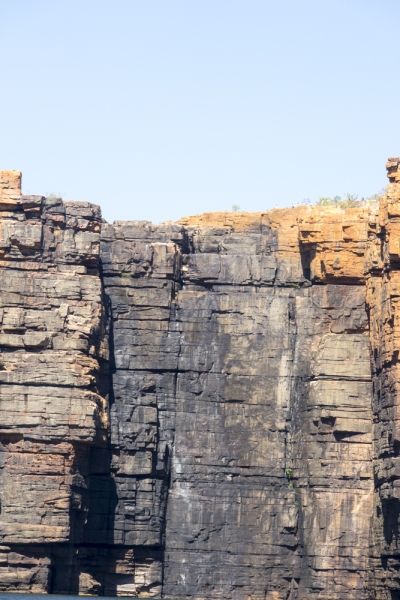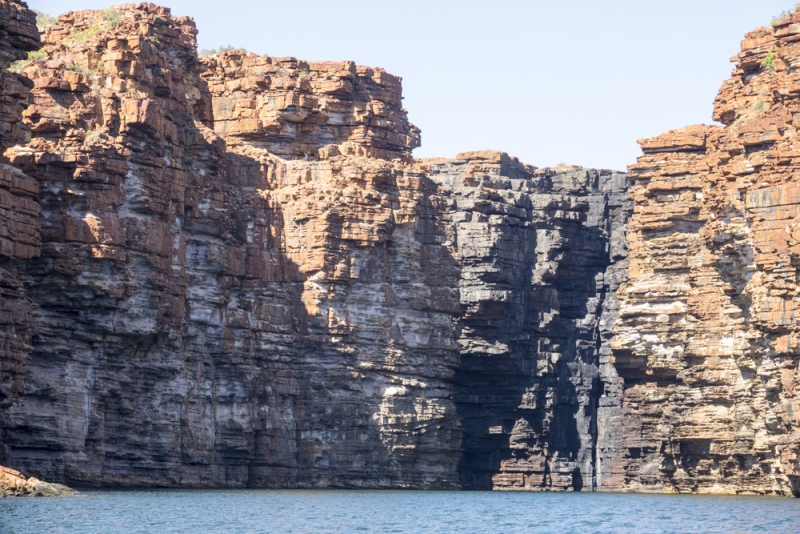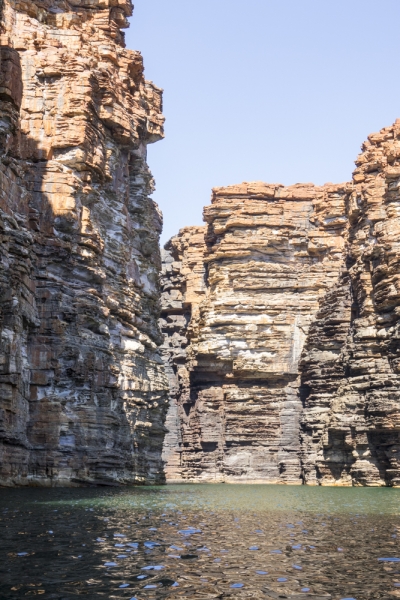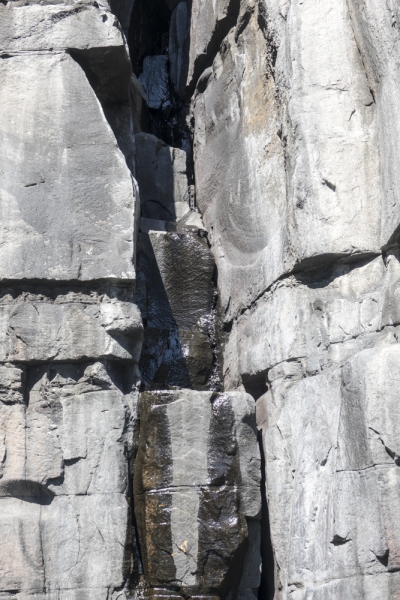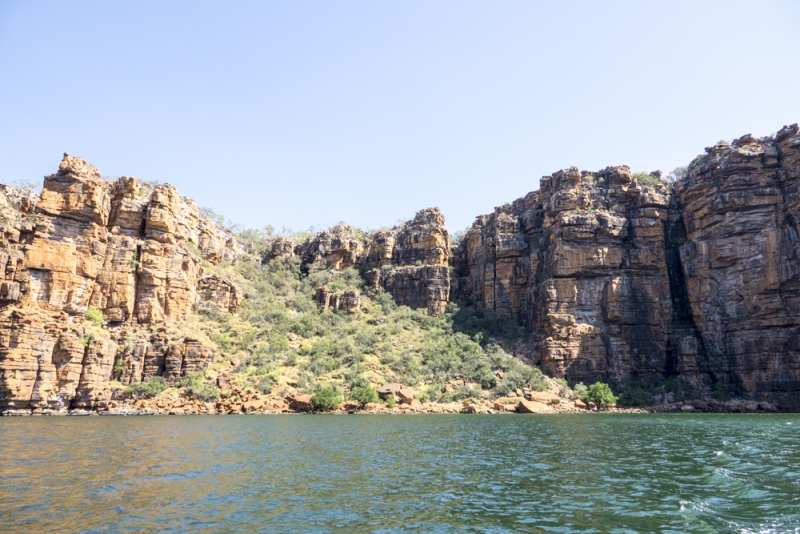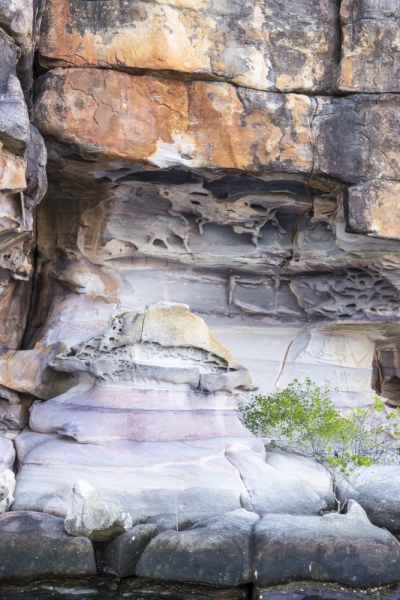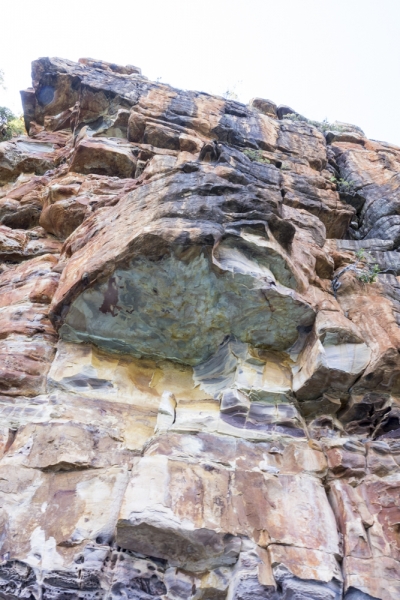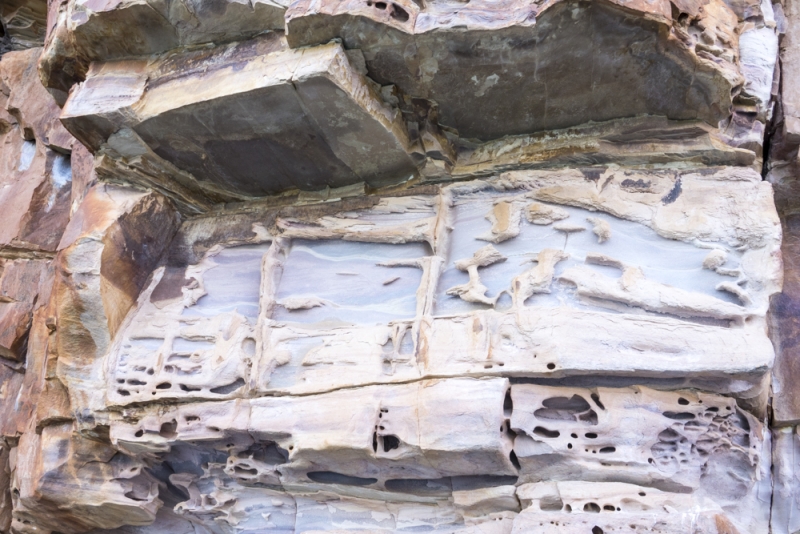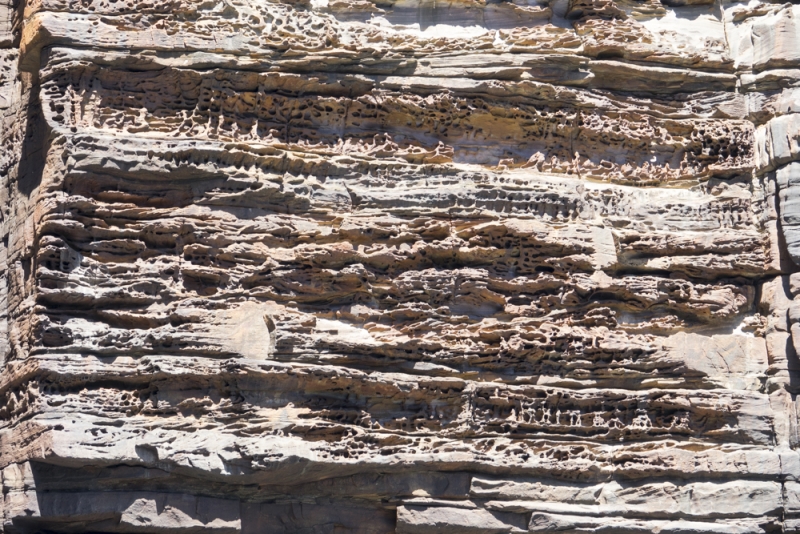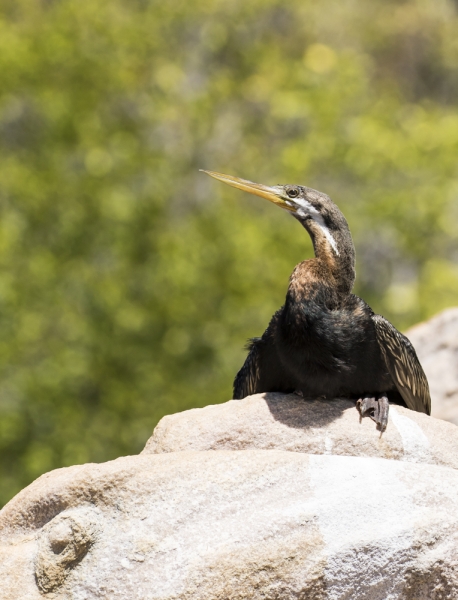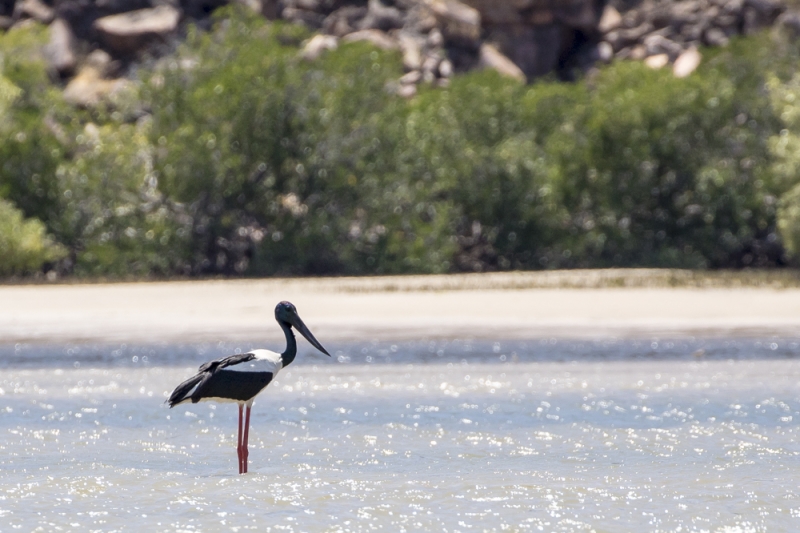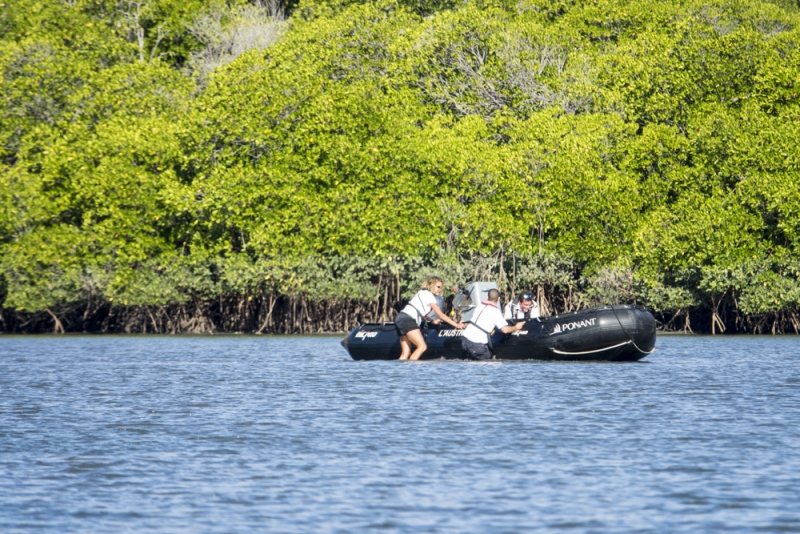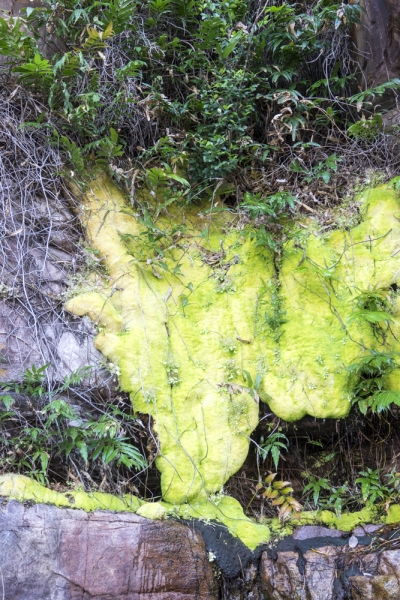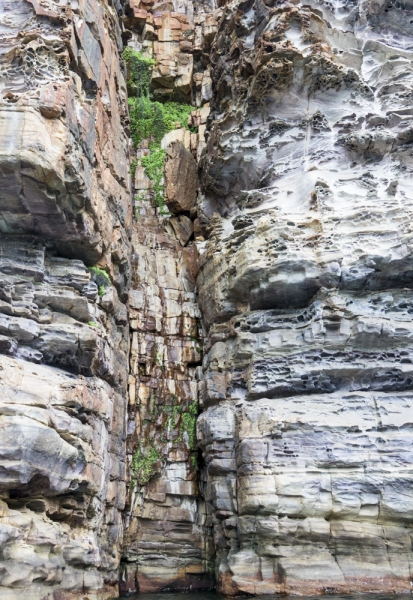Today’s visit to the King George River offers a full program of activities – a 6 hour zodiac cruise and hike to the top of the falls departing at 6.30am , a 3.5 hour zodiac cruise departing at 7am, and a series of 2 hour zodiac cruises departing at 7.30am or 10am. In the afternoon it’s another 3.5 hour zodiac cruise or more 2 hour cruises. I opt for the 7am 3.5 hour cruise, hoping for some wildlife even though the sun has been up for 90 minutes, and hope to repeat it again in the afternoon. It’s a milder day today, with a temperature range of 29⁰C in the morning to 32⁰C in the afternoon.
I’m lucky enough to have Mick Fogg, the expedition leader as the zodiac driver, as he has all of the necessary qualities in a guide – a smooth zodiac driver, expert wildlife spotter, and doesn’t talk incessantly. The first things we see are a group of migratory birds from Siberia (godwits) that have flown 8,000 miles in one non-stop trip. This group are trying to catch up on some sleep as we pass them. The white egret looks like it has just caught a fish as it flies away from us.
It is not long until we sight the first saltie – a shy individual with a distinctive notch near the tip of it’s tail. It also looks on the thin side. It is not happy with the presence of the zodiac and moves off the beach into the river and disappears.
Today is going to be one for bee-eaters, and it’s not long until we spot the first of quite a number today – this one is a rainbow bee-eater, and one that is happy to pose in the early morning sunlight.
Our next croc is sun-baking on a rock at the east arm of the gorge, about 20 metres away from where an American tourist was foolish enough to go swimming in 1987 and was promptly killed by a crocodile. This one looks like it is napping, but closer inspection of the photo shows one eye is open and checking us out. It is also ready to move at any time based on the position of its feet.
King George Falls are dry this time of year, with the merest trickle of fresh water to be found. The black walls indicate the flow of water during the wet season, and the black colour is from dormant bacteria.
This scree slope is the path up to the top of the falls that the 6 hour zodiac + climb passengers took. 29 elected to tackle the climb unassisted, which is roughly 10% of the passengers. According to reports afterward, the climb up took roughly 45 minutes, and 30 minutes to descend the same way.
The geology of the area is fascinating – in the images below is an example of honeycomb erosion, caused by water and wind.
Next up on the bird spotting is a male Australasian Darter, drying off in the sunshine.
The last bird of note before heading back to L’Austral is a jabiru – a long way away and difficult to photograph with the black head and bill, but it’s the only one I’ve seen on this trip, so better than nothing.
The sea is still choppy on the way back to L’Austral, so it turns into a 4 hour zodiac trip. A brief stop to dry off and some lunch, and it’s back into a zodiac for another 3.5 trip. Leaving at 2:15pm, we should be out for the start of sunset, and back just before dark. So the theory goes. There are a fleet of four zodiacs doing the 3.5 hour trip by the look of it, and Jaime our driver follows Mick back into the same area of the gorge that we were in this morning. The major difference is that this morning was high tide, and we are now out in low tide, with some very shallow water being caused by sand bars emerging as the tide recedes.
The first incident is near where the sun-baking salty was seen on the rock in the east arm of the gorge. The safety boat runs aground on a sand bar, and in an act of absolute madness, the crew of three jump into the calf deep water to push the zodiac free.
The next incident is on our zodiac, deep in the east arm of the gorge, and outside the line of sight needed for radio contact. There seems to be air in the fuel line to the zodiac, and no amount of pumping the balloon in the fuel line will shift it to start the motor of the engine. Jaime’s boyfriend Sebastian is a fellow zodiac driver and naturalist, and tows our zodiac out of the shallow water in the gorge to deeper water in the river system.
It is impractical to tow us any further due to the weight of both zodiacs with a total of 17 passengers and 2 drivers, so we drop anchor and wait for Sebastian to head off to get in radio range with the safety boat. It’s a great adventure – the story gets more embellished every time a passenger thinks of a new headline – “shipwrecked in croc-infested Kimberley without food, water or shelter” is an example. What seems like a long wait is no more than 20 minutes as the safety boat approaches. All bar one of the passengers transfer into another more powerful boat as the engineer works on starting the motor of the zodiac. One passenger elects to return to L’Austral, probably to be the first to breathlessly retell the trauma of this major maritime incident to anyone that will listen. The rest of us continue on the new zodiac to the falls, and find one of the many hidden, hanging, green gardens that signal the presence of fresh water.
Just as it is getting dark, Sebastian radios Jamie to have a look in the small pond behind a row of mangroves – he’s spotted a large flock of rainbow bee-eaters trying to settle into the mangroves for the night. These gorgeous little birds, usually see only one or two at a time, are cuddling up three or four abreast in the branches of the mangrove. The slightest noise sees them take flight quickly and return. Video is the only real option given the gathering dark. It’s shaky as the zodiac is bouncing up and down on its own wash.
It’s getting late now so it’s a high speed trip for the 14km back to L’Austral, winding through the King George River out into the Timor Sea.
It is completely dark by the time we return to L’Austral four hours later, with a story to tell of our adventure in the inhospitable wilderness of the Kimberley. L’Austral is brightly lit, and the sea is virtually flat, in complete contrast to the rest of the day.

